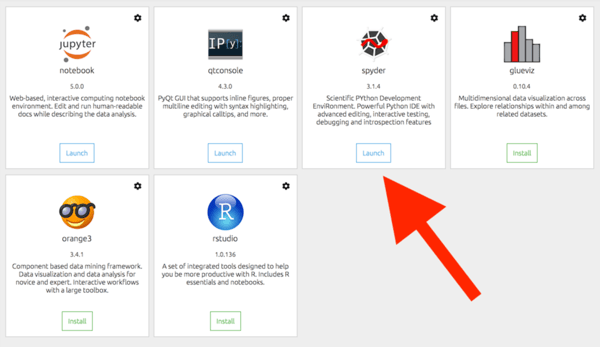

- ADD NUMPY TO ANACONDA MAC HOW TO
- ADD NUMPY TO ANACONDA MAC INSTALL
- ADD NUMPY TO ANACONDA MAC MAC
- ADD NUMPY TO ANACONDA MAC WINDOWS
1 You will sometimes need this even if you use Conda, but in general, pip works best for so-called noarch-packages, i.e.
ADD NUMPY TO ANACONDA MAC INSTALL
Please note that I did not completely test this myself, since Homebrew is a global install and as such I couldn’t just try it out with a new user account.
ADD NUMPY TO ANACONDA MAC HOW TO
on the conda-homepage directly) on how to do that – if you even need specific instructions to begin with. I expect there will little change, and as soon as this article is outdated, there’ll be plenty of “native” documentation (i.e.
ADD NUMPY TO ANACONDA MAC MAC
So, in this blogpost I’ll outline how you can now install PyTorch (and other libraries like SciPy, numpy, pandas, etc.) on your M1 Mac as of mid-2021. In general, I’ve learned a lot over the past 6 months – especially with regard to how you organise your Python environments and all those pesky package dependencies. This doesn’t mean that you can simply run pip install torch on M1 Macs, but almost.

But slowly, everything is falling into place. It turns out that actually only few compilers support new platform/architecture combinations easily. Since then, luckily, many things have changed.Īs you can see here and here, we’re slowly getting there. Back then, it involved a little bit of fiddling around and also downloading (or compiling yourself) a version of PyTorch. As I'm getting more and more emails by people asking whether or not my old instructions still hold true, I've decided it's time for an update.Ī few months ago I wrote an article outlining how you could set up a PyTorch data science environment using one of the new MacBooks. However, in the past six months, lots has changed. Back then I told you that installing PyTorch is a pain and back then it was because the ecosystem wasn't fully adapted to the fact that suddenly MacBooks could also have ARM instruction sets. Or any other desired library, it works with the Python interpreter in Fusion 360.A few months ago I received my first MacBook with an M1 chip – a.k.a.: It uses the ARM-architecture instead of the default Intel-architecture that most modern computers use. Once you move to that directory when launching My initial fear stems from the fact that that last directory appears to change frequently and I therefore wonder if changes made will be permanent. That last subdirectory appears to be a 40 character random generate alphanumeric. Searching manually on my computer, I found it at:Ĭ:\Users\myUserID\AppData\Local\Autodesk\Webdeploy\Production\abxy234.

The real problem is to locate where the Fusion 360 embedded Python interpreter is located. In the Python version installed into Fusion 360, things are different.
ADD NUMPY TO ANACONDA MAC WINDOWS
Please note that the experience here only applies to Windows 10.įrom Anaconda, you can easily request a terminal from which your Python interpreter is reachable. Could it be that it is considered unnecessary to call on other libraries in conjunction with the Fusion 360 API? I find that in my own work, it makes some things easier for me to use numpy, matplotlib and some other modules. It is interesting to note that most users simply ignored the question.


 0 kommentar(er)
0 kommentar(er)
